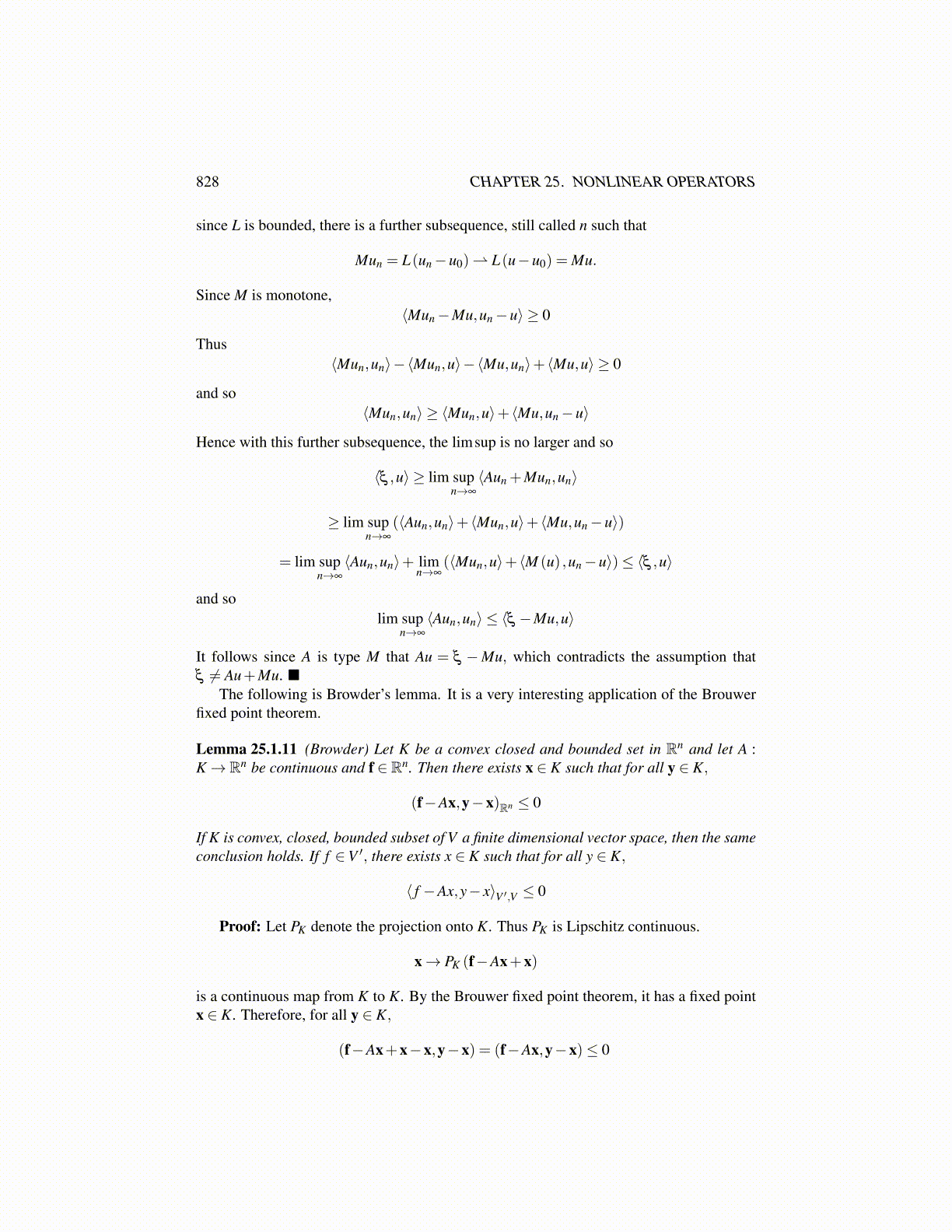
828 CHAPTER 25. NONLINEAR OPERATORS
since L is bounded, there is a further subsequence, still called n such that
Mun = L(un−u0)⇀ L(u−u0) = Mu.
Since M is monotone,⟨Mun−Mu,un−u⟩ ≥ 0
Thus⟨Mun,un⟩−⟨Mun,u⟩−⟨Mu,un⟩+ ⟨Mu,u⟩ ≥ 0
and so⟨Mun,un⟩ ≥ ⟨Mun,u⟩+ ⟨Mu,un−u⟩
Hence with this further subsequence, the limsup is no larger and so
⟨ξ ,u⟩ ≥ lim supn→∞
⟨Aun +Mun,un⟩
≥ lim supn→∞
(⟨Aun,un⟩+ ⟨Mun,u⟩+ ⟨Mu,un−u⟩)
= lim supn→∞
⟨Aun,un⟩+ limn→∞
(⟨Mun,u⟩+ ⟨M (u) ,un−u⟩)≤ ⟨ξ ,u⟩
and solim sup
n→∞
⟨Aun,un⟩ ≤ ⟨ξ −Mu,u⟩
It follows since A is type M that Au = ξ −Mu, which contradicts the assumption thatξ ̸= Au+Mu.
The following is Browder’s lemma. It is a very interesting application of the Brouwerfixed point theorem.
Lemma 25.1.11 (Browder) Let K be a convex closed and bounded set in Rn and let A :K→ Rn be continuous and f ∈ Rn. Then there exists x ∈ K such that for all y ∈ K,
(f−Ax,y−x)Rn ≤ 0
If K is convex, closed, bounded subset of V a finite dimensional vector space, then the sameconclusion holds. If f ∈V ′, there exists x ∈ K such that for all y ∈ K,
⟨ f −Ax,y− x⟩V ′,V ≤ 0
Proof: Let PK denote the projection onto K. Thus PK is Lipschitz continuous.
x→ PK (f−Ax+x)
is a continuous map from K to K. By the Brouwer fixed point theorem, it has a fixed pointx ∈ K. Therefore, for all y ∈ K,
(f−Ax+x−x,y−x) = (f−Ax,y−x)≤ 0